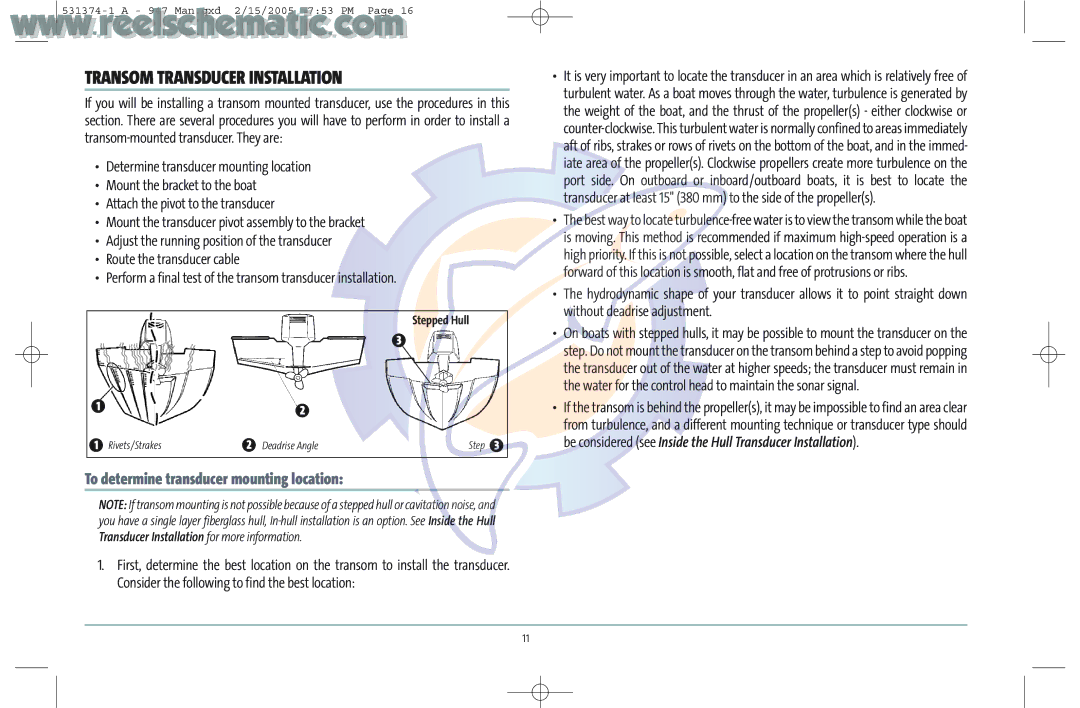
TRANSOM TRANSDUCER INSTALLATION
If you will be installing a transom mounted transducer, use the procedures in this section. There are several procedures you will have to perform in order to install a
•Determine transducer mounting location
•Mount the bracket to the boat
•Attach the pivot to the transducer
•Mount the transducer pivot assembly to the bracket
•Adjust the running position of the transducer
•Route the transducer cable
•Perform a final test of the transom transducer installation.
Stepped Hull
3
1 | 2 |
|
|
|
| ||
|
|
| |
|
|
|
|
1 Rivets/Strakes | 2 Deadrise Angle | Step 3 | |
To determine transducer mounting location:
NOTE: If transom mounting is not possible because of a stepped hull or cavitation noise, and you have a single layer fiberglass hull,
1.First, determine the best location on the transom to install the transducer. Consider the following to find the best location:
•It is very important to locate the transducer in an area which is relatively free of turbulent water. As a boat moves through the water, turbulence is generated by the weight of the boat, and the thrust of the propeller(s) - either clockwise or
•The best way to locate
•The hydrodynamic shape of your transducer allows it to point straight down without deadrise adjustment.
•On boats with stepped hulls, it may be possible to mount the transducer on the step. Do not mount the transducer on the transom behind a step to avoid popping the transducer out of the water at higher speeds; the transducer must remain in the water for the control head to maintain the sonar signal.
•If the transom is behind the propeller(s), it may be impossible to find an area clear from turbulence, and a different mounting technique or transducer type should be considered (see Inside the Hull Transducer Installation).
11
